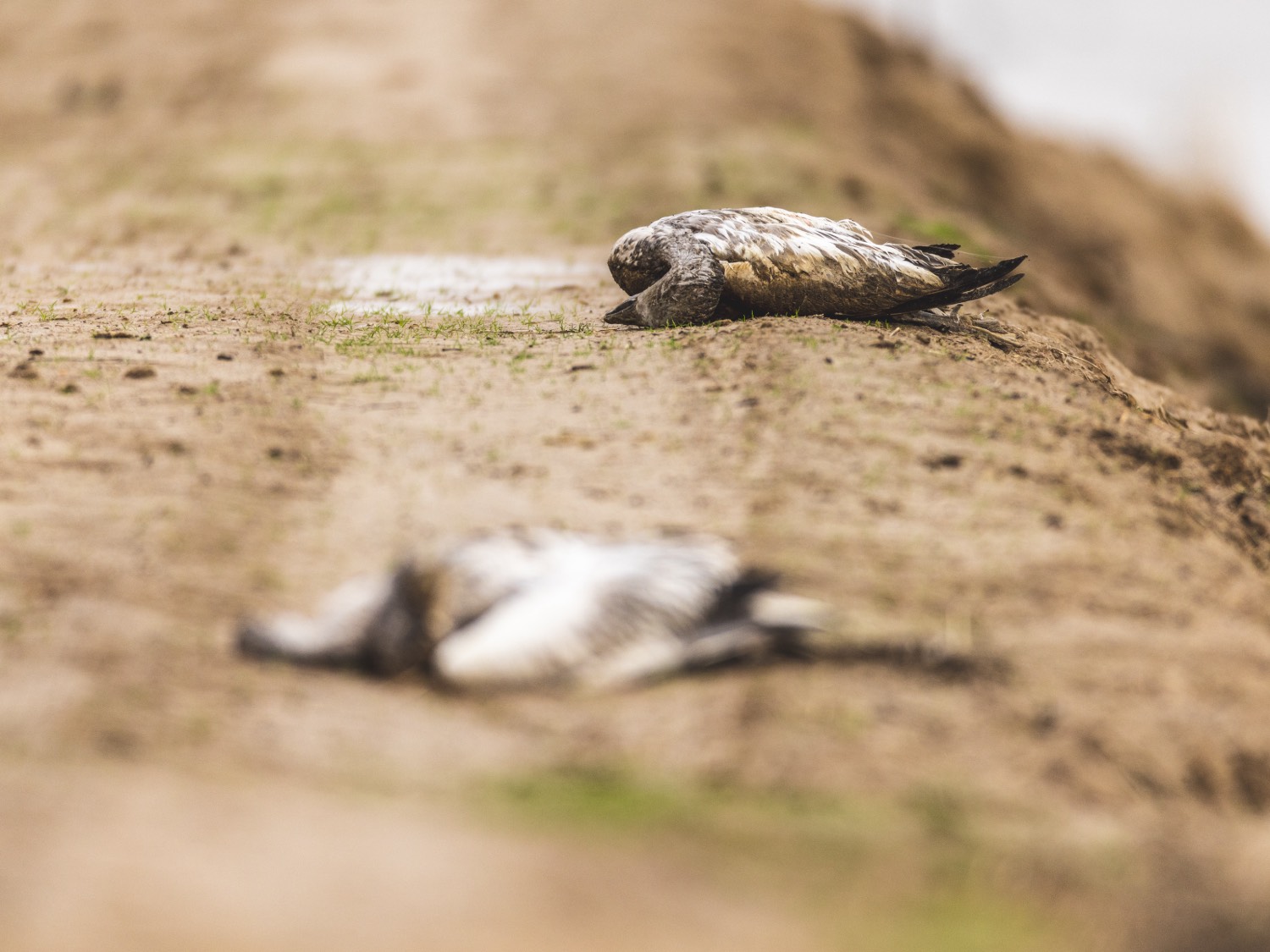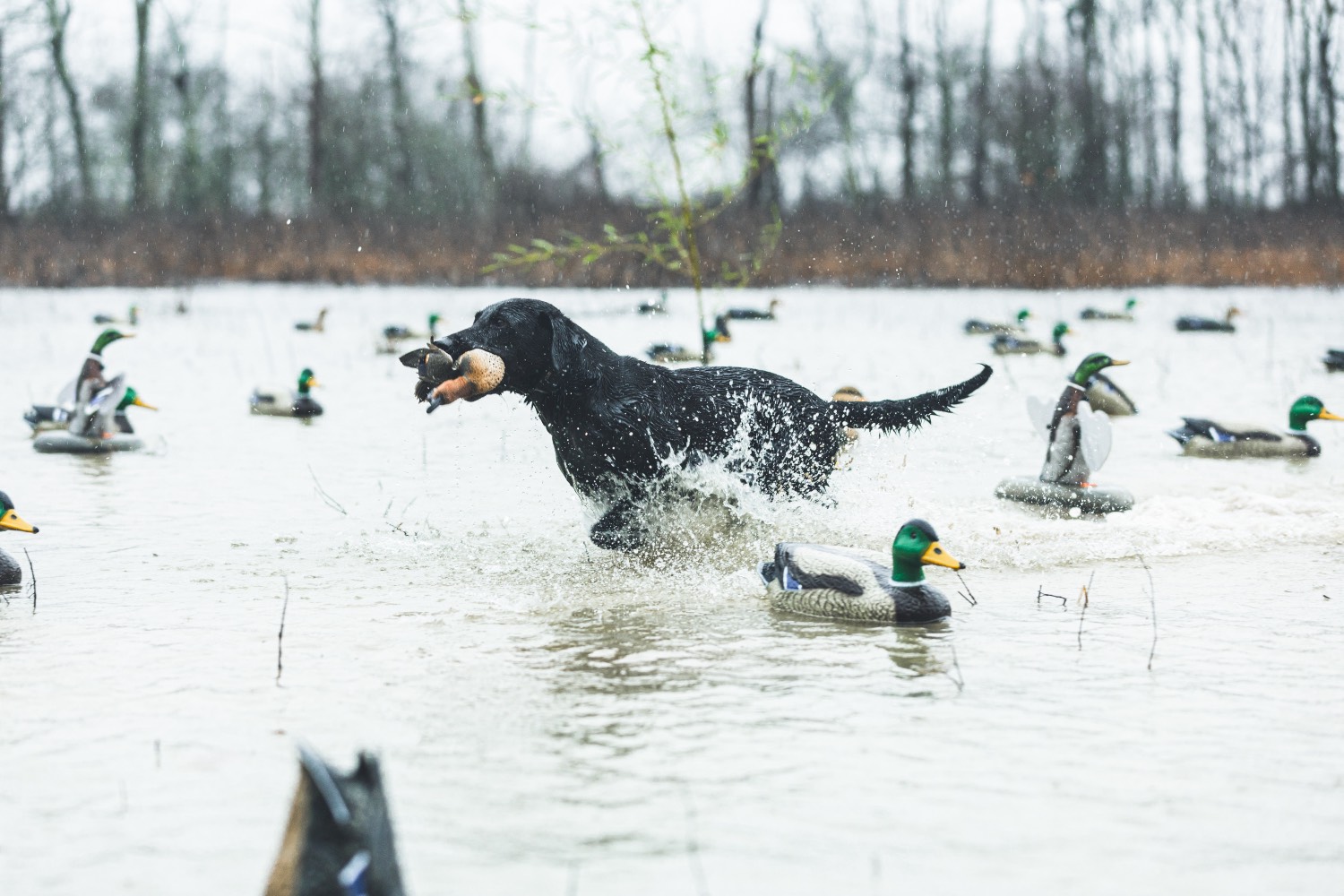Written by J. Brian Davis, Associate Professor, Department of Wildlife, Fisheries & Aquaculture, Mississippi State University

Avian Flu 2022 Outbreak
Dr. Davis' Personal Experience
If you are a waterfowler or birder, you certainly have heard about the avian influenza virus challenge in North America. Some of the information below is already printed for public knowledge by various federal (e.g., US Fish and Wildlife Service) and health (e.g., National Wildlife Health Center) agencies in various outlets.
Avian influenza is a disease caused by various strains of avian influenza viruses typically classified as either low pathogenic avian influenza (LPAI) or highly pathogenic avian influenza (HPAI). These viruses are specific agents that cause mortality in domestic poultry. However, avian influenza also threatens wildlife, agriculture, and possibly human health.
The HPAI avian influenza has been detected in North American wild birds for the first time since 2015. Initial detections occurred in Canada and the United States in December 2021. The HPAI has since spread to the United States and waterfowlers particularly have reported dying, listless, “confused,” poor flying birds in many areas of the United States while hunting thus far in autumn-winter 2022.
I am a waterfowl ecologist and a waterfowl hunter. I hunt with a good friend and colleague in eastern Arkansas. We hunted opening weekend of the early goose season (October 29-30, 2022) and noticed dozens of dead or dying birds, predominately juvenile snow or ross’ geese. The property on which we hunt primarily contains harvested rice and soybean fields.
Several of the symptoms of affected birds we observed included weak flying ability, such as flying low and loss of wariness, swimming slowly in circles, individuals swimming into decoy spreads and remaining near a decoy(s), groups of birds reluctant to flush, birds standing or hunkered down on levees, and other behaviors completely abnormal for typically highly intelligent and elusive white geese.
One important factor at this time of year (late October 2022) was the drought conditions in many parts of the United States. On the Arkansas farm, we had 2 flooded fields that literally hosted tens-of-thousands of nocturnal roosting birds, primarily white geese and greater white-fronted geese.
Roosting options were quite limited across this and many landscapes. Upon our return for the duck season opener (November 19), these conditions and observations persisted. We anticipated some cumulative growth in numbers of dead birds, however, it seemed comparable to the October visit with perhaps a slight increase (perhaps by 10-15%). Our observations were anecdotal as we did not rigorously quantify numbers of dead and dying birds.
Fortunately, substantial rainfall occurred amid waterfowl hunting areas, such as eastern Arkansas, between mid-November and mid-December 2022. My hunting partner and I had reminisced in October and November, “If we could just get some rain to create habitat and spread these birds out.” Well, that happened. During the first week of December 2022, there was extensive sheetwater present in fields in eastern Arkansas.
During that hunting trip (December 10-11, 2022) our observations of geese seemingly affected by avian influenza was essentially zero! We were elated, thinking all fall that eventually tens-of-thousands of these (flooded) habitat limited and dense birds might succumb to the virus. The rains seemingly brought some respite. As we say in wildlife science, “That does not necessarily mean ‘cause-and-effect’ but it sure seems coincidental.”
Federal and state agencies and conservation organizations will continue monitoring these conditions through 2022 and into 2023. Please visit the multiple agency links to remain updated on this horrible disease. Safe hunting and handling of birds.
Gamekeeper Podcast Discusses the Avian Flu Outbreak with Dr. Mike Brasher
Dr. Mike Brasher, senior waterfowl scientist at Ducks Unlimited, gives an update on the avian flu that’s currently affecting waterfowl. We want to understand what it is, how it spreads, the risk to humans and, of course, our dogs. While we learn the overall risk to dogs and humans remains low, experts are highlighting areas of potential concern and advising on steps that hunters can take to further reduce their exposure and risk.
Avian Influenza Data Reports and Safety Guidelines
Detections of birds in the United States can be reported and read online by the U.S. Department of Agriculture.
Some agencies such as the U.S. Geological Service National Wildlife Health Center have generously provides us an updated map of confirmed detections in North America.
These professional agencies are recommending that any bird banders, bird rehabilitators, hunters, or anyone who might handle wild birds read the Wildlife Health Bulletin 2022-02 - Status and Response to Detections of Highly Pathogenic Avian Influenza H5N1 in North America and follow necessary precautions to prevent the spread of Avian Influenza among birds and safeguard their health.
Information below appeared in the Wildlife Health Bulletin 2022-02:
Field biologists should consider these minimum precautions when handling potentially sick or dead birds associated with a morbidity/mortality event:
Wear protective clothing including aprons, coveralls, rubber boots, gloves (rubber, latex, or nitrile), eye protection, and face shields that can be disinfected or discarded to prevent skin and mucous membrane contact with biological materials and movement of biological materials among sites.
People should work in well-ventilated areas or upwind of animals to decrease the risk of inhaling airborne particulate matter such as dust, feathers, or dander. It is also recommended to remember basic hygiene such as washing hands often and thoroughly for at least 30 seconds with soap or alcohol-based hand sanitizer.
Moreover, it is recommended that people do not eat, drink, or smoke while handling animals. Lastly, it is important to decontaminate work areas and properly dispose of potentially infectious material including carcasses. The primary goal of carcass disposal (e.g., incineration, composting, certified landfilling) is to prevent the spread of infectious agent.
As of late November 2022, the H5 and H5N1 have been detected in every state except New Mexico. Hundreds of species of birds have been affected. Relative to northern states such as the Dakotas, Minnesota, Wisconsin, and some others, Arkansas, Louisiana, and Mississippi have far fewer cases, however, particularly in wild birds.
































